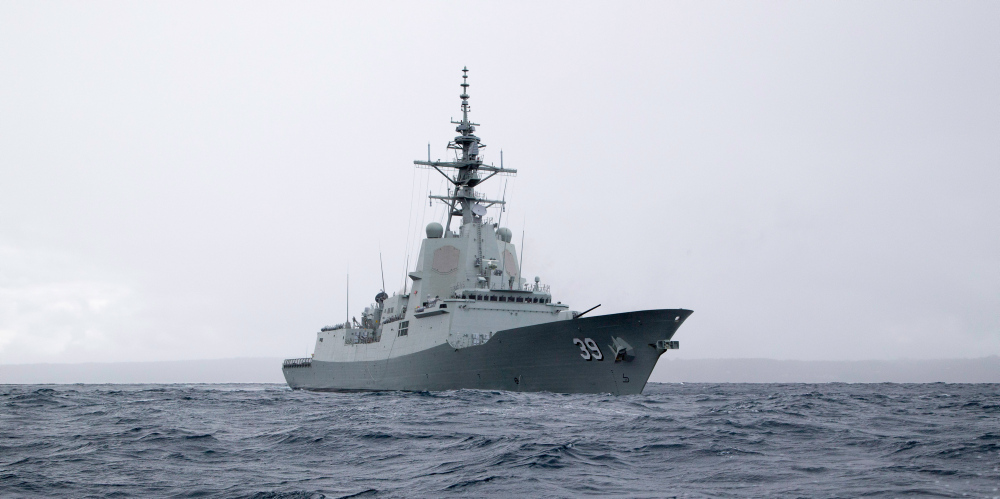Royal Australian Navy and US Navy Cooperative Engagement Capability
The RAN has successfully demonstrated its ability to integrate its communications and data with the US Navy via its new Raytheon-developed Cooperative Engagement Capability (CEC).
The test was conducted between the RAN’s new DDG HMAS Hobart and the USN’s Arleigh Burke class DDG USS John Finn at the Pacific test range near Hawaii, and saw tracking and fire control data shared between the two vessels.
“These trials are the culmination of 12 months of preparations and demonstrate Hobart’s formidable capability,” Minister for Defence Christopher Pyne said in a statement. “Australia is the first country outside the United States with Cooperative Engagement Capability, and so this demonstration marked the first time this capability was proven between two navies.”
Commanding Officer HMAS Hobart Captain John Stavridis added, “Connecting and sharing data with the US Navy like this is an important step in increasing our interoperability with them, especially during linked task group operations at sea.
“Sharing information like this between ships at sea means that ships in a task group can know and respond to what is going on, including sharing tracking and targeting data. It means that a ship can detect and, if needed, engage a threat identified by another ship or aircraft, creating greater flexibility and better protection for all the ships involved.”
In his paper The Cooperative Engagement Capability (CEC) – Transforming Naval Anti-air Warfare published in 2007, William D. O’Neil says “…the key to CEC is the ability to move from track-telling to transmitting complete radar data, dwell by dwell.” A ‘dwell’ is described as a “single radar ‘look’ at a target, which may involve multiple pulses in rapid succession but at the same beam position.”
O’Neil said this has been enabled by advances in computer speed from the use of faster digital components in radar receivers, and by computerised digital communications which permit faster transmission speeds without the need of greater bandwidths or increased power. These advances have effectively seen the first distributed lethality utilised by naval platforms.
The US Navy says CEC’s two major system functions consist of a Cooperative Engagement Processor (CEP) for sensor networking, and a Data Distribution System (DDS) for real-time communications amongst cooperating units (CU). It says each CEC-equipped unit uses identical sensor data processing algorithms resident in its CEP, resulting in each unit having the same display of air tracks.
The ADF plans to integrate CEC with other assets such as the RAAF’s E-7A Wedgetail AEW&C aircraft, its future AIR 6500 Integrated Air and Missile Defence (IAMD) program, and the SEA 5000 Hunter class frigate’s Aegis combat management system to provide a long-range, cooperative and layered air defence network.
This article was first published by Australian Defence Business Review on November 6, 2018.
The featured photo shows HMAS Hobart in the waters of Jervis Bay, New South Wales when conducting weapons firing trials off the east coast of Australia in February 2018.
HMAS Hobart is based at Fleet Base East in Sydney.
For our visit to HMAS Hobart earlier this year, see the following:

